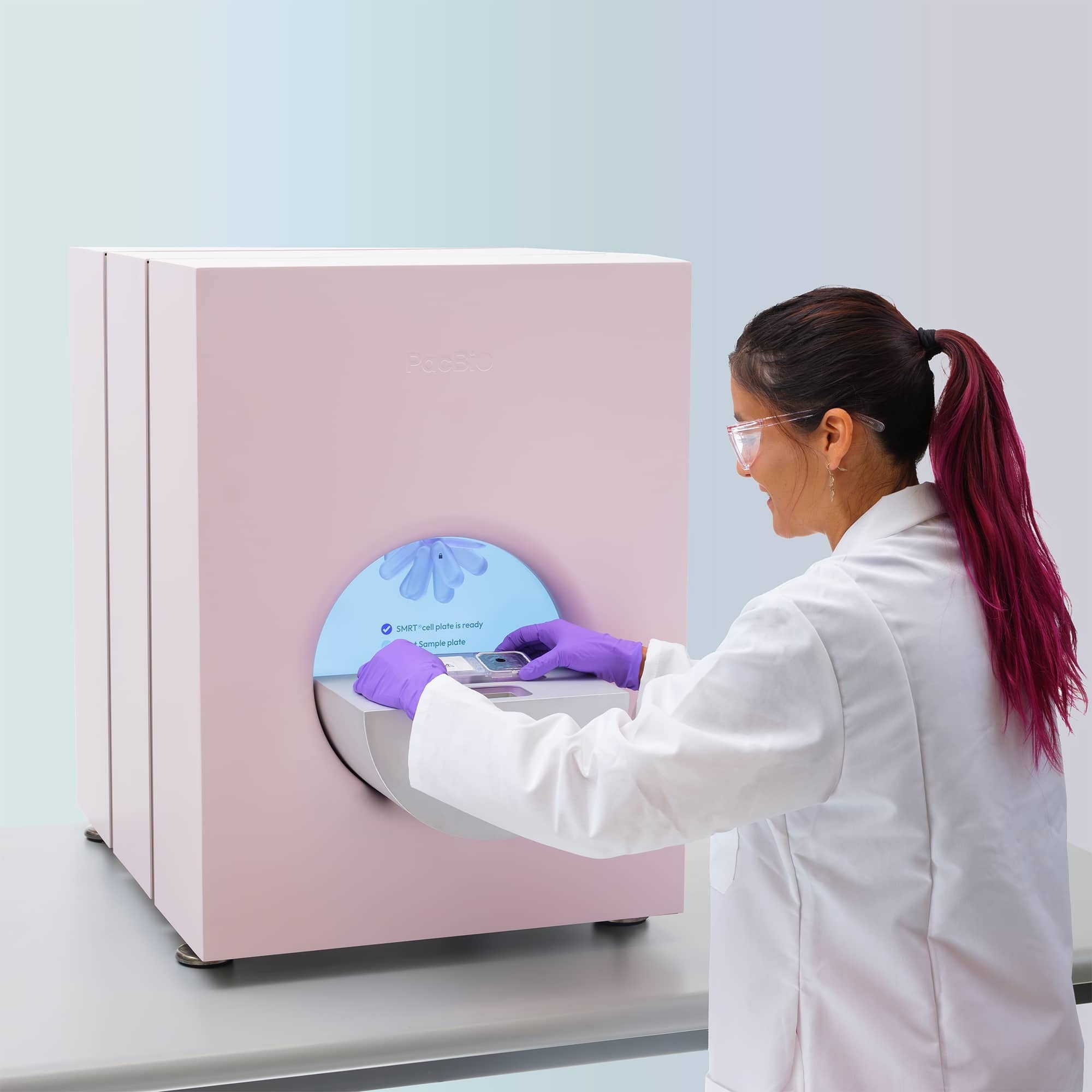 Interview conducted by Lexie CornerJul 29 2025
Interview conducted by Lexie CornerJul 29 2025Newborn screening (NBS) is one of the most successful public health interventions of the last century. In England, it involves taking a small blood sample from a baby’s heel on day five of life. This sample is used to screen for a number of rare but serious conditions, including cystic fibrosis, sickle cell disease, and phenylketonuria.
These conditions are not usually visible at birth, but can cause significant harm if left undetected. Early diagnosis allows for prompt treatment and long-term management, helping to prevent disability and improve outcomes for affected children.
As knowledge of the genetic basis of disease continues to grow, there is increasing interest in how genomic tools could expand the scope of conditions screened at birth. Whole genome sequencing, in particular, is being explored as a way to detect a broader range of inherited disorders that are not captured by current methods.
We spoke with Neil Ward, Vice President and General Manager for EMEA at PacBio, about the role of long-read sequencing in this evolving landscape, and how national programs are beginning to explore its integration into newborn care.
 Image Credit: Pacbio
Image Credit: Pacbio
To start, could you introduce yourself and your role at PacBio?
I’m Neil Ward, Vice President and General Manager for EMEA at PacBio. I’ve been in the genomics industry for more than 20 years and have had the opportunity to be involved in some of the world’s largest population-scale sequencing initiatives.
I’ve led the expansion of PacBio in EMEA, working to grow our partnerships and footprint in scientific and clinical communities. I oversee our customers across the region, ensuring they have the right support and technology to get the most out of their sequencing platforms and drive forward research programs that contribute to improving human and planetary health.
For those who aren’t familiar, could you give us a quick overview of PacBio’s sequencing platforms and the types of research or clinical applications they support?
PacBio develops the most advanced DNA and multiomic sequencing technologies available today, delivering a highly accurate and complete view of the genome. Our platforms are used by researchers and clinical scientists around the world to tackle a wide range of challenges, from understanding rare diseases and cancer to monitoring infectious diseases and supporting biodiversity and conservation efforts.
PacBio offers a portfolio of systems designed to meet different lab needs. Our long-read platforms, including Revio and the benchtop system Vega, are ideal for conducting whole-genome sequencing projects and resolving complex and previously inaccessible regions of the genome.
Together, these platforms give scientists the flexibility and depth required to explore the full spectrum of genetic variation, whatever their lab’s size and needs.
The government has recently announced that every baby in England will undergo whole genome sequencing within the next decade. What do you see as the most important implications of this initiative?
This initiative has the potential to transform the future of healthcare in England. Embedding whole genome sequencing into newborn screening is a first step towards truly preventative, personalized care from birth. That means earlier diagnoses, faster interventions, and better outcomes for families, as well as reducing the long-term cost of treating advanced disease.
If implemented successfully, the NHS could become one of the first public health systems in the world to deliver genome-informed care on a population scale, setting a global benchmark for equitable, precision healthcare.
Short-read sequencing is still the standard in many newborn screening programs. Where does this technology fall short, and how might long-read approaches address those gaps?
Short-read sequencing works by analyzing small sections of DNA to identify variants linked to specific conditions, offering a fast and scalable solution. For example, the UK’s heel prick test screens for nine conditions, Australia’s covers around 25, Italy screens for approximately 40, and the US screens for 37 core disorders.
However, while short-read sequencing is rapid, it only captures a limited view of the genome. More complex variants associated with rare or inherited diseases can be missed. Families then have to wait for further tests, delaying treatment.
In contrast, taking a whole genome approach using long-read sequencing overcomes these limitations by analyzing longer DNA fragments. This allows for the direct detection of structural variants, accurate phasing of inherited mutations, and improved resolution of repetitive or highly similar genomic regions.
Long-read sequencing provides a more complete and accurate picture of the genome, enabling more confident diagnoses and expanding the range of conditions detectable from a single test. This supports more timely, informed, and personalized care for families.
Most newborn screening programs use dried blood spots (DBS). What limitations do they pose for genome sequencing, and what alternative approaches are being explored to improve sample quality?
DBS samples are widely used in newborn screening due to their convenience and low cost. However, for whole-genome sequencing using long-read technologies, DBS samples have historically posed challenges. The small quantity of DNA and potential degradation over time from DBS samples can limit sequencing accuracy and depth, making it harder to detect complex variants.
That’s now beginning to change. New protocols, including the AmpliFi protocol developed by PacBio, have shown that it’s possible to generate high-quality long-read data from even a single 3.2 mm DBS punch.
A recent study led by University of Yale demonstrated that variant phasing and structural analysis in cystic fibrosis patients could be successfully achieved from DBS, offering clinical-grade results from low-input samples.
Alongside improvements in DBS sample processing, some programs are also exploring cord blood as an alternative. Cord blood offers higher DNA yield and preserves methylation patterns, enabling not only high-resolution genome analysis but also insights into epigenetic changes that may act as earlier indicators of disease risk.
Together, these innovations are expanding the potential of newborn genome sequencing by improving data quality from existing sample types and opening the door to even more comprehensive, actionable screening.

Image Credit: antibydni/Shutterstock.com
You’ve had visibility into a range of newborn genome sequencing efforts around the world. What stands out about how national programs are approaching implementation?
Countries are taking varied approaches to implementing newborn genome sequencing, but two themes consistently stand out: starting with focused pilot programs that build on existing screening infrastructure, and a strong emphasis on collaboration and knowledge-sharing across borders.
For example, PacBio is working with Thailand’s Chulalongkorn University on the first national effort in Asia-Pacific to integrate long-read sequencing into newborn screening. This initiative is designed to both advance local capabilities and inform global best practice. By learning from one another, countries can accelerate implementation, avoid duplication, and make genome-informed screening a scalable reality.
As genome sequencing becomes more integrated into newborn care, what ethical considerations should healthcare systems be thinking about?
As this technology becomes more embedded in newborn care, healthcare systems must navigate a range of ethical considerations, including informed consent, data privacy, and the type and amount of information returned to families.
It’s essential to balance the benefits of early diagnosis with the potential psychological, social, and ethical implications of uncovering future health risks.
Genomic data, like all healthcare data, must also be protected with the highest standards of security and governance. Clear policies on what is reported, how results are explained, and who has access to the data are critical to building public trust and ensuring responsible, equitable implementation.
What’s next for long-read sequencing in newborn screening, and how could it support other fields?
As more countries look to modernize their programs, we hope others will follow Thailand’s lead in adopting long-read sequencing that offers deeper resolution and greater diagnostic power from day one.
Beyond rare disease detection, long reads could unlock real progress in areas like pharmacogenomics, where (similar to rare disease genes) many of the genes linked to drug response are highly complex and can’t be accurately analyzed with short-read methods.
Long-read sequencing is the only way to truly move the dial here, enabling precise and personalized treatments from the very start of life. It also opens the door to family-based screening, revealing how conditions are inherited and managed across generations, supporting a proactive model of care that starts at birth.
About Neil Ward
Neil Ward is Vice President and General Manager for EMEA, PacBio. He is a genomics industry veteran with more than two decades of global experience.
Neil has a passion for the role genomics can play to better human health, and he believes that this can be achieved by accelerating the utility of in-depth, highly accurate genomic applications.
Neil has served as a key contributor to many of the world’s largest genomics projects, including Genomics England’s 100,000 Genome Project, the Estonian Genome Project, and the whole-genome sequencing of the 500,000 UK Biobank samples. He has a BSc in Biochemistry and an MSc in Bioinformatics from the University of Manchester.
Where can readers find more information?
How HiFi sequencing with the Ampli-Fi protocol can transform newborn screening with dried blood samples